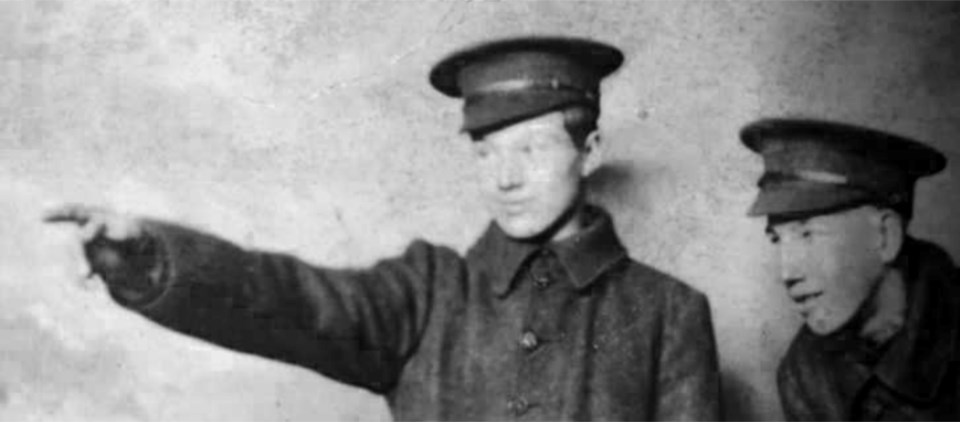 In October of 1915, a young Sarnian named Robert Arthur Batey left his home on Julia Street and walked into an army recruiting station. He was carrying a letter from his mother, Blanche, 34, granting consent for her 17-year-old underage son to enlist in the Canadian Expeditionary Force.
In October of 1915, a young Sarnian named Robert Arthur Batey left his home on Julia Street and walked into an army recruiting station. He was carrying a letter from his mother, Blanche, 34, granting consent for her 17-year-old underage son to enlist in the Canadian Expeditionary Force.
She was painfully aware of Robert’s passion to serve in the First World War, which might explain her willingness to lie so baldly.
Because Blanche Batey’s son was not yet 17. Nor was he 16, or even 15. Robert Batey had in fact just turned 14 four months earlier.
Within a year he was lying dead on the battlefield of Flers-Courcelette – the second major offensive in the Battle of the Somme.
Tom Slater, Sarnia’s pre-eminent military historian, had already determined Robert Batey was the youngest soldier named on the Sarnia Cenotaph.
And new research conducted by Veterans’ Affairs Canada has confirmed Robert Arthur Batey is the youngest of the 11,285 soldiers inscribed on the Canadian National War Memorial at Vimy Ridge, in northern France.
Amanda Kelly runs the Veterans’ Affairs program known internally as the Ghosts of Vimy Student Research Project. Post-secondary students assigned during non-COVID days as student guides at the war memorial and French cemetery sites have been researching the lives of Canada’s fallen heroes.
A biography of Robert Batey that Kelly came across on the Sarnia Historical Society website led her to contact Slater to discuss his recently republished Sarnia War Remembrance Project. The updated, two-volume set of Sarnia’s fallen soldiers has been shared with libraries, service clubs, media and others in Sarnia-Lambton.
Slater is currently updating Kelly and her team with data he has painstakingly compiled on the 28 Sarnians inscribed on the Vimy National War Memorial.
“Over the past decade, Tom Slater’s selfless and purely voluntary work recording the lives of our fallen soldiers has made him a civic treasure,” said Sarnia Historical Society President Cory Burke.
“Now his work is being appreciated nationally and incorporated into Canada’s proud history at the site of our greatest military victory.”
Got an interesting tale? Contact columnist Phil Egan at [email protected]
